

Best pH Probes For Hydroponics in 2025 – A Complete Buying Guide
Finding the best pH probe for hydroponics can make or break your growing success. In hydroponics, maintaining the correct pH is essential because it directly
# Type at least 1 character to search # Hit enter to search or ESC to close

No products in the cart.

No products in the cart.
Product Categories

Vertical farming is an alternative and revolutionary approach to traditional agriculture methods. It involves growing crops vertically in stacked layers inside a controlled environment. Because of this, crops can be grown all year round, offering better food availability. Vertical farming also maximizes space whilst conserving resources such as water.
The future of agriculture is becoming a concern and needs to change. The worldwide population is increasing at 1% per year, with some countries growing even faster. As the population grows, the demand to feed us puts pressure on agriculture.
Many farming practices are incredibly harmful to the environment, with agriculture linked to climate change, soil degradation, and deforestation. By not acting on the issues traditional methods are causing, we have lost one-third of our arable land on Earth over the last 40 years due to erosion and pollution.
Additionally, by the year 2050, it is estimated that we will need to feed up to 10 billion people on our planet. Therefore, we must find solutions to produce food for future generations. The good news is that with technological advances, farming techniques are meeting some of those challenges – this is where vertical farming comes in.
Vertical farming is exactly what it sounds like—farming vertically on surfaces rather than horizontally on land. This new agricultural method uses vertically stacked layers, which allows farmers to produce far more food on the same amount of land or less land. Farmers can integrate vertical layers into infrastructures such as skyscrapers, shipping containers, greenhouses, warehouses, or other spaces that are not suitable for typical farming.

However, vertical farming is much more complex than simply stacking a bunch of plants and hoping for the best. It requires specific parameter control, such as humidity, water, lighting, and artificial temperature. If this delicate balance of parameters is not maintained, farmers could lose an entire crop, similar to how a traditional farm experiences poor harvests due to flooding or droughts.
The current methods used in vertical farming differ from traditional methods, such as LED lights and advanced automation that control the surrounding environment. This advanced technology allows farmers to produce abundant crop yields all year round, providing optimal conditions despite the climate and weather conditions outside the vertical farm.
As you will know, traditional farming requires farmers to plant crops in open soil fields, depending on natural sunlight and irrigation. However, vertical farming occurs inside, where crops are stacked in layers and controlled by automated systems, much like aquaponics, hydroponics, and other methods of soilless growing!
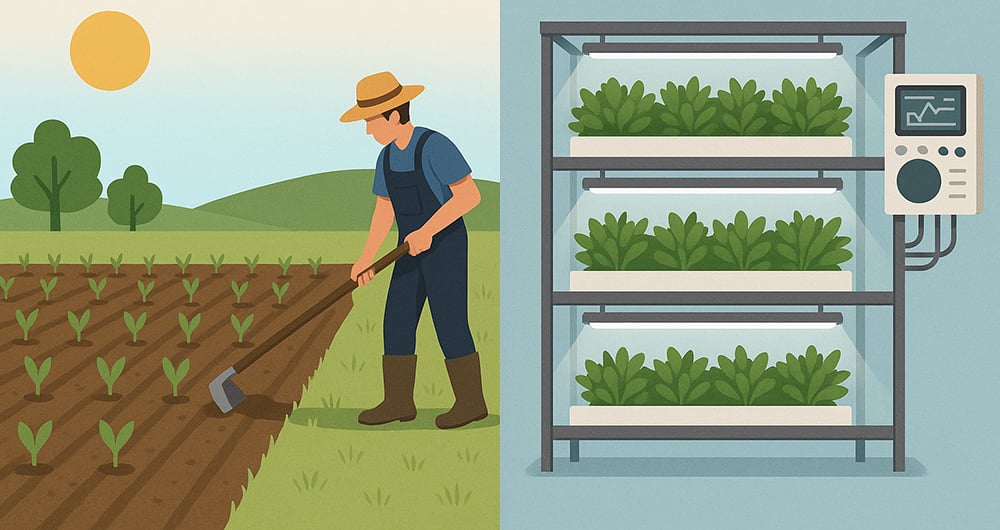
Unlike traditional farming, vertical farming does not require soil. Instead, water is supplied directly to the crop’s roots, which saves a lot of water. The substrate is coconut fibers, rock wool, hemp fibers, or expanded clay.
At Atlas Scientific, we believe that vertical farming could answer many of the agricultural challenges we face every day. Aside from providing us with more food, how do vertical farms work precisely?
Before discussing the different crops and how farmers can boost yields, we should return to the beginning of the crop life cycle—the seed’s life.
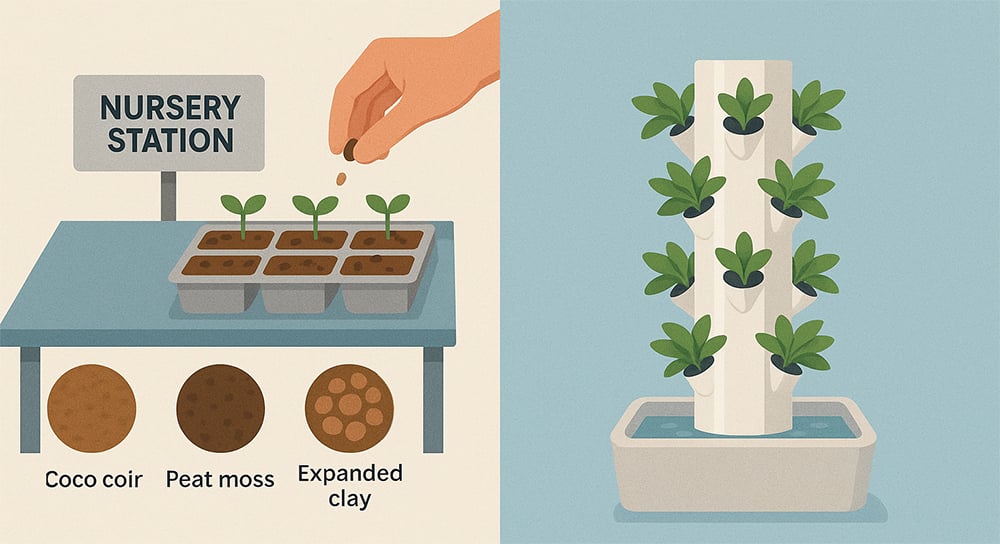
In vertical farming, seeds are planted in hydroponic media (water enriched with nutrients) such as coco coir, peat moss, and the few mentioned earlier (coconut fibers, rock wool, hemp fibers, or expanded clay). Seed planting happens in a nursery station, which we will discuss later. Once the seeds have matured, they can be transferred into hydroponic towers, allowing them to thrive without occupying lots of floor space.
The seeds develop well here, absorbing nutrients from the nutrient-rich water solution. Inside the vertical farm, the temperature and lighting conditions are controlled, creating the perfect microclimate that farmers can adjust to maintain healthy and thriving plants.
Vertical farming is not as straightforward as traditional field farming. It requires specific components, from the growing space to the elements that farmers must control.
Vertical farming can take different forms (from warehouses with stacked growing trays to patio gardens made from old wooden pallets), but it all boils down to the same concept—a way for growers to cultivate and grow crops year-round!
One of the most critical components inside a vertical farm is the multi-layered production shelves. These are stacked vertically and constructed based on the building’s cubic area and the crops being grown.
Artificial lighting controls the growth rate and flowering process, as plants inside a vertical farm cannot be grown using the Sun. This lighting is slightly different from the typical fluorescent lights in our homes. Farmers can set the lights to meet the plant’s demands and get all the necessary elements for proper growth.
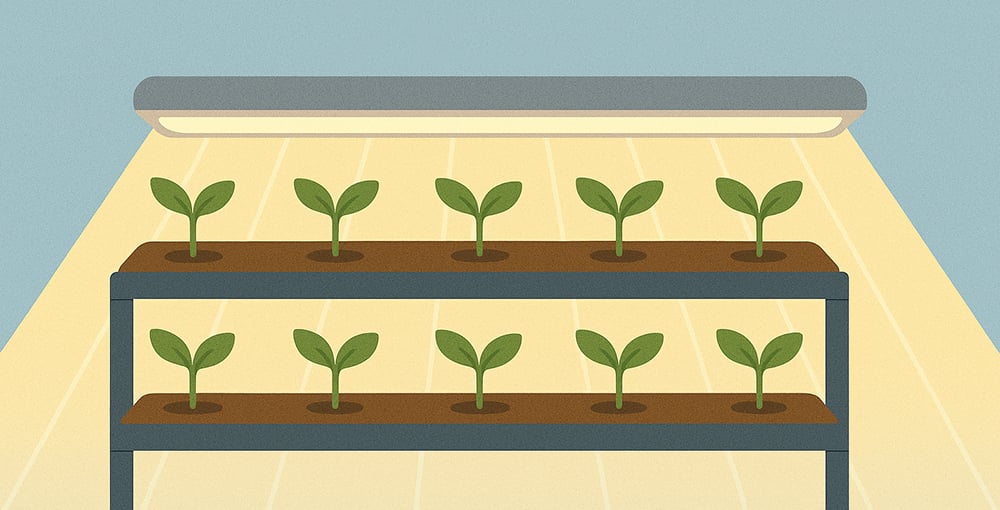
Artificial lighting allows the light intensity (wavelengths) and light duration to be adjusted. Standard lighting used in vertical farms includes high-pressure sodium (HPS) and LED fluorescent lamps.
The key aspects for optimal plant growth in vertical farming include:
Maintaining these precise environmental parameters requires specialized monitoring systems. Professional-grade pH sensors are key for monitoring the acidity levels of nutrient solutions, ensuring plants receive optimal nutrient uptake. Additionally, dissolved oxygen sensors play a crucial role in hydroponic systems by monitoring oxygen levels in the water, which directly affects root health and plant growth rates.
Vertical farms should have a designated nursery station for the incubation and maturation of young seedlings. When they are ready, farmers can move the seedlings to the vertically inclined surfaces where production occurs. This stage is split into two different forms depending on the size of the crops – specially designed rooms (larger crops) or cultivation cabinets (smaller crops). Here, the crops spend a few days to weeks until they reach the correct weight and height before being transferred into the central farm system.
Irrigation systems in vertical farming differ because they are soilless. In vertical farming, the irrigation system provides the plant’s roots with nutrient-rich water in a closed circuit to reduce waste. Water is maintained at a constant level within the closed system; however, farmers can change the water level and composition (of micro- and macro-elements) can be changed depending on the plant’s needs.
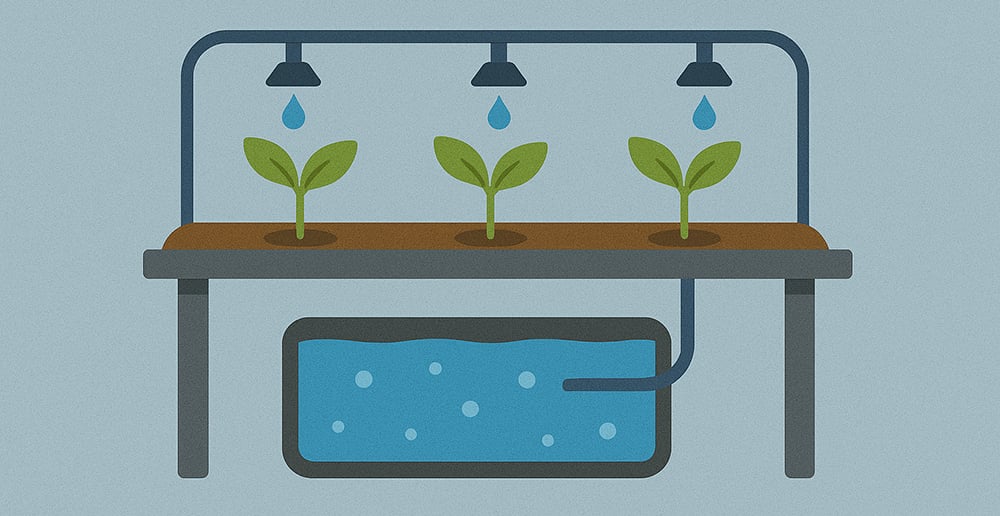
An automated system, typically AI or robotics, controls the entire farming process. The automation system is connected to software that can be used for remote farming management, minimizing human error and enabling the quick delivery of high-quality crops.
To learn more about automated farming systems, read our guide HERE.
These automated systems rely heavily on real-time sensor data to maintain optimal growing conditions. High-precision sensor probes continuously monitor critical parameters in automated systems to help make the correct adjustments to ensure consistent crop quality and maximizing yields.
Vertical farming offers many benefits, from minimal environmental impact to farming in less space.
One of the most significant benefits of vertical farming is utilizing resources such as space and water. Vertical farmers typically use up to 95% less water and 99% less space than farming on land. A study revealed that vertical farming uses 28 times less land than traditional methods.
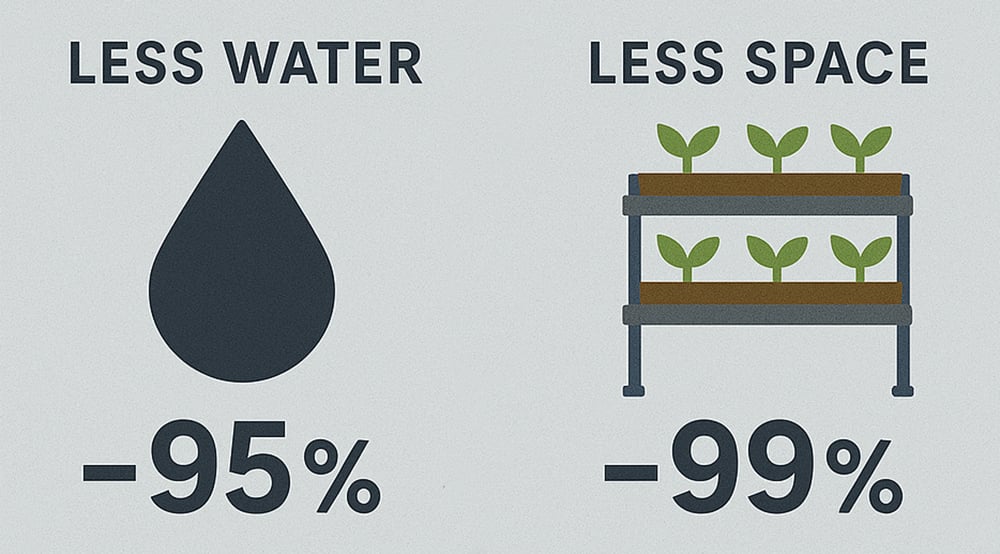
Using less land and water offers a promising solution to global land scarcity and environmental concerns such as deforestation. Vertical farming can also yield exceptional yields of 240 times compared to traditional farming methods because of the year-round harvest.
Vertical farms that use LED lights for sunlight rely less on fossil fuels and other energy sources that could harm the environment.
In the next 30 years, it is estimated that more than two-thirds of the world’s population will live in urban areas. This increase in population means that we will have a higher demand for food in areas where traditional farming is nearly impossible. In these large metropolitan areas, vertical farming brings hope, allowing farmers to grow food on demand without vast spaces for fields.
A massive benefit to vertical farming is the crops that can be grown in vertical farms. Gone are the days when we can only buy seasonal fruits and vegetables! Vertical agriculture offers a new approach, allowing farmers to develop what they want when they want. Instead, vertical farmers can produce various crops year-round with little dependence on the climate and weather.
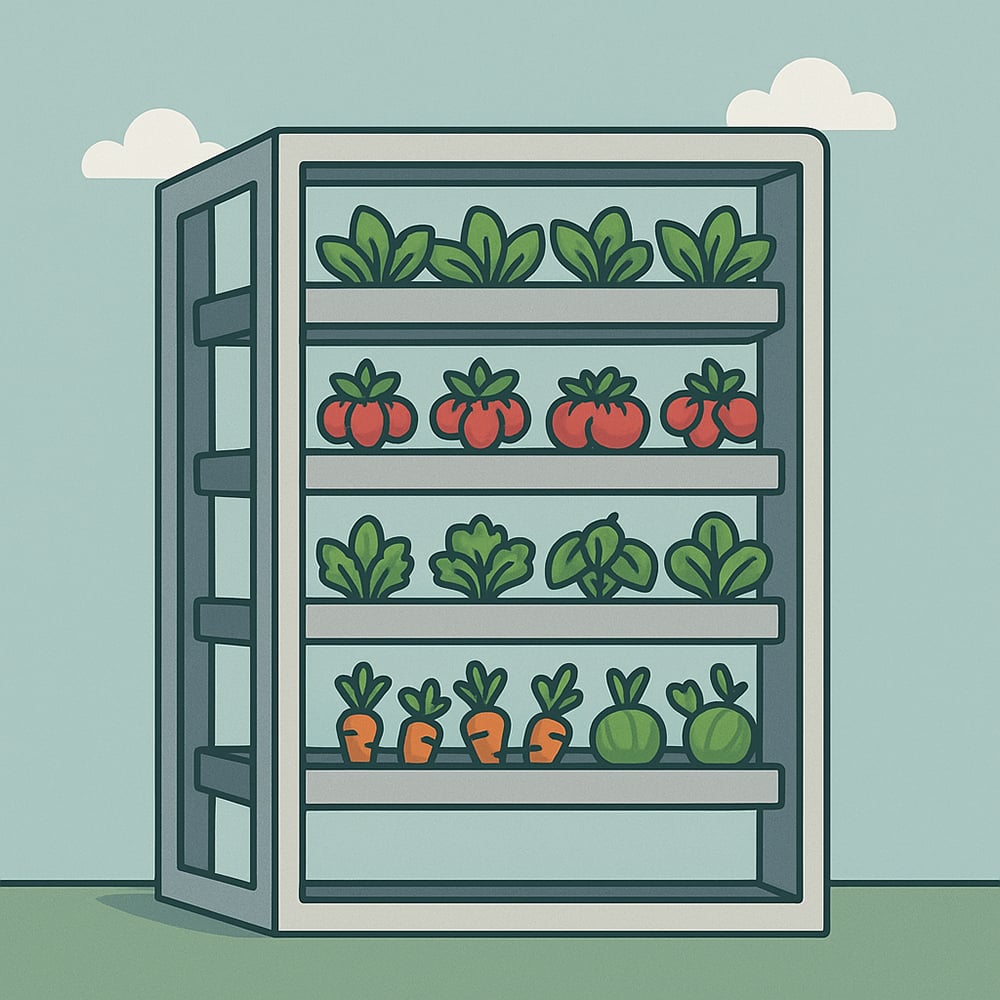
Controlled Environmental agriculture, or CEA, is a concept that eliminates the environmental impacts that traditional farming can cause. CEA can also reduce the occupational hazards associated with land farming – as vertical farming doesn’t allow wildlife to roam the area, it reduces conflicts between farmers and native animals and plants.
Vertical farming also reduces the farmer’s exposure to hazardous chemicals and diseases such as malaria or other life-threatening challenges. Plus, because there is no dangerous chemical runoff, surrounding farms and land are protected.
CEA vertical farms also require less or no pesticides. Because of the controlled environment, pests are naturally kept outside the farm.
Vertical farms can be integrated into existing buildings and constructed with a small footprint. They are beneficial in areas where harvesting in arid climates, such as deserts, is challenging. By implementing vertical farms, we can overcome this problem of food security in these areas. Not only does this provide healthy and nutritional food to countries where only unhealthy options are available, or food is limited, but it also employs low-income families.
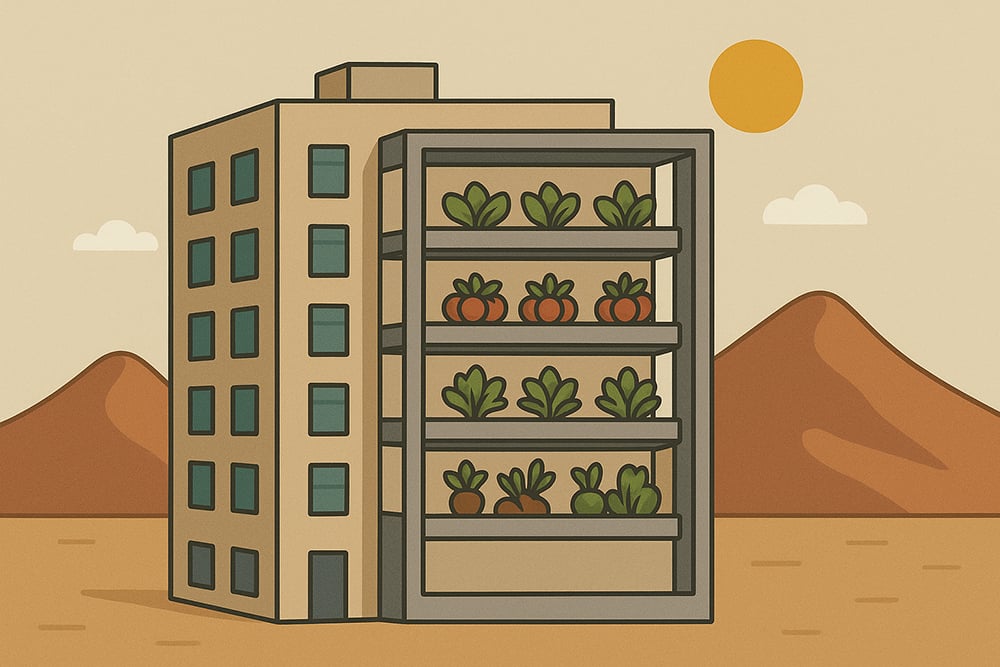
As farmers can construct vertical farms in urban areas, the distance the food travels between the farm and stores is significantly reduced, lowering the carbon footprint.
The fewer miles to travel between also means the food reaches the end destination much fresher, creating less food waste and offering healthier food for local communities.
To learn more about the advantages of vertical farming, read our guide HERE.
As you can see, vertical farming is fantastic, but the main disadvantage is giving up access to the Sun. The Sun is Earth’s most abundant and free natural energy source, and plants thrive under it. Most vertical farms use stacked systems, requiring artificial light sources, which can become very expensive.
Because of their indoor nature, vertical farms also require humidity control via costly and energy-intensive ventilation, heating, and air conditioning (HVAC) systems.
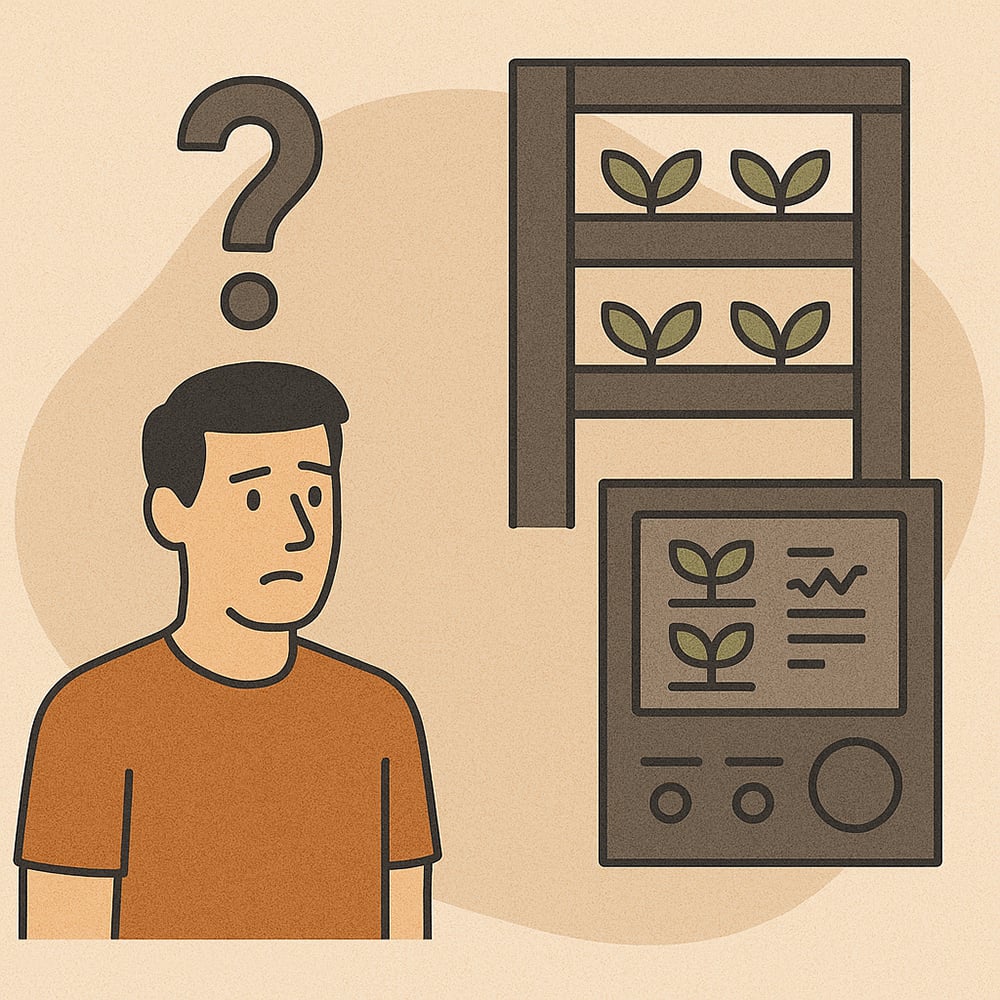
Another issue can be a lack of knowledge. As vertical farming requires extensive monitoring and relatively new technology, some farmers may not know how to maximize crop yield under controlled environments. In 2018, Congress created the Grand Challenge Synergy Project to educate farmers on CEA to overcome this issue.
Herbs, leafy greens, and microgreens are the most successful crops in vertical farms, as they thrive in small spaces. However, other vegetables and fruits also grow well in vertical farming environments.
These include:
Many people believe that vertical farming could lead the agricultural world. As technology and AI systems advance rapidly, the increasing high-tech enables farmers to produce more crops, pollute the environment less, and overcome challenges traditional farming faces.
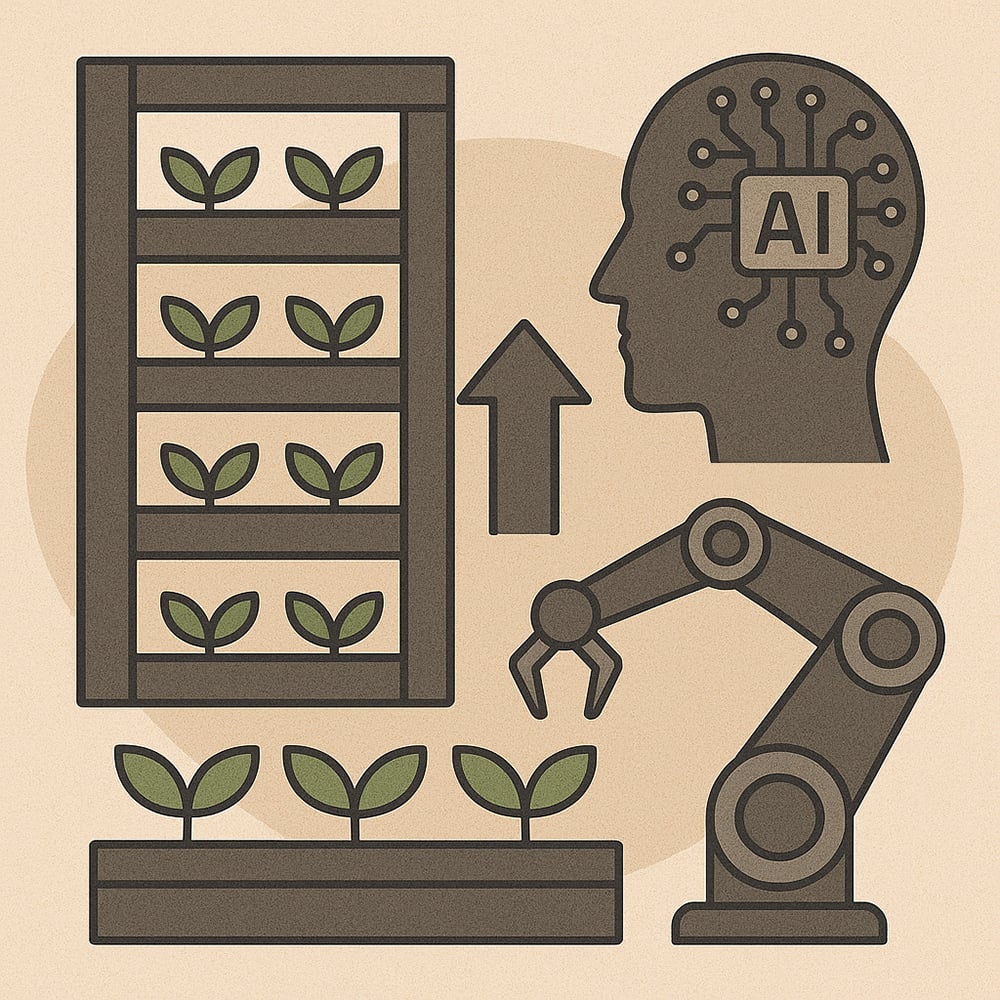
We only have to look around us to see how far we have come from the time agriculture is thought to have started 12,000 years ago. Only last year did farmers discover “a new era in agriculture” – a world where robotic harvesting and monitoring are beginning. We don’t know what the future holds, but we know that vertical farming will become much more common as we face the challenges right before us.
Vertical farming is an innovative method of growing crops in vertically stacked layers, typically within a controlled indoor environment such as a greenhouse or warehouse. It combines alternative farming methods such as aeroponics, hydroponics, and artificial lighting to create optimal growing conditions all year round.
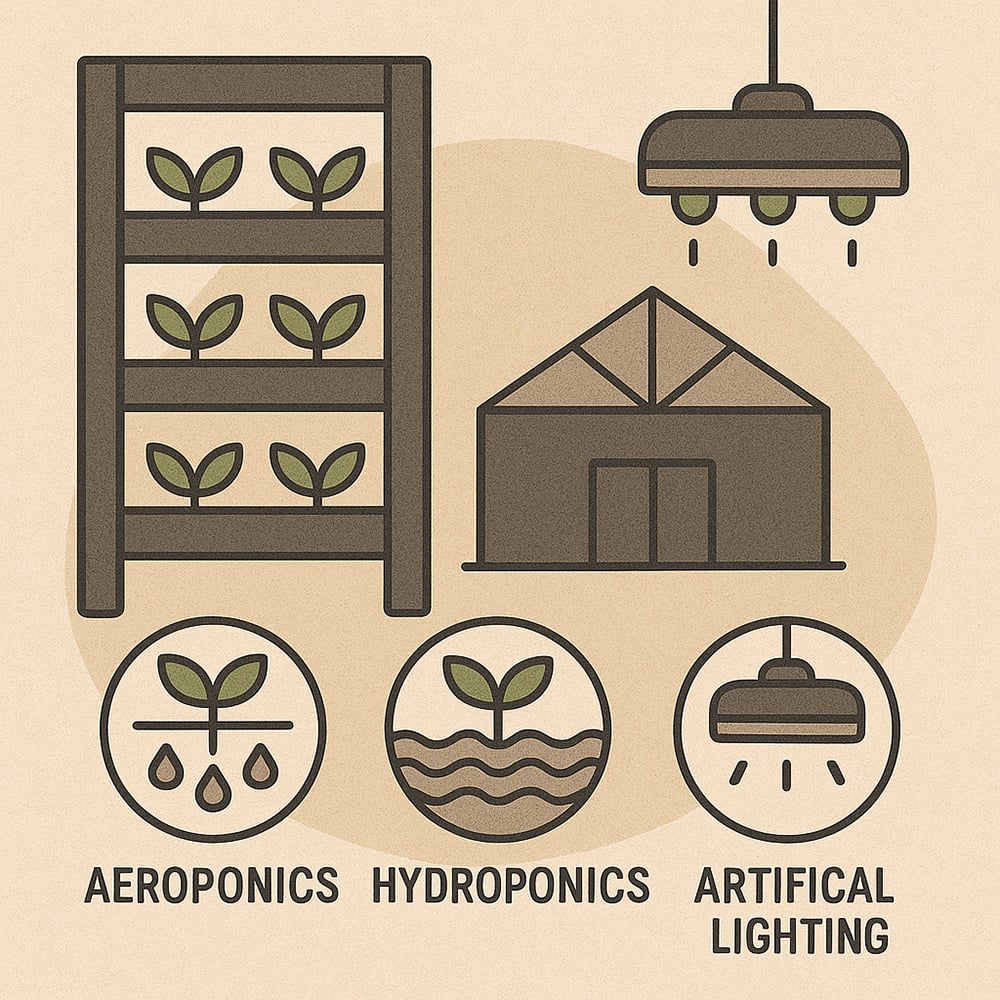
Through technological advancements and continued research, vertical farming will play a key role in food security for communities and future generations. If you have any questions on alternative farming methods like vertical farming or hydroponics, contact the world-class team at Atlas Scientific today.

Finding the best pH probe for hydroponics can make or break your growing success. In hydroponics, maintaining the correct pH is essential because it directly

The fastest way to reduce ammonia levels in a fish tank is to perform partial water changes, temporarily stop feeding fish, use chemical filtration, increase
Notifications